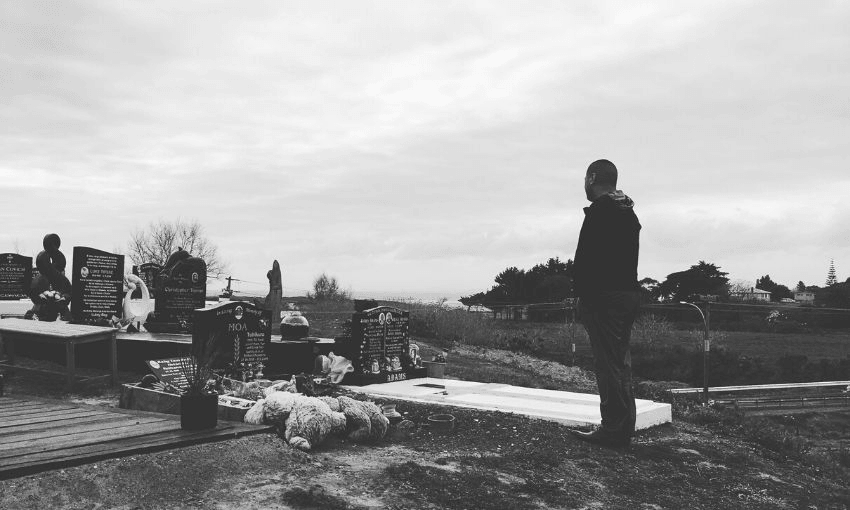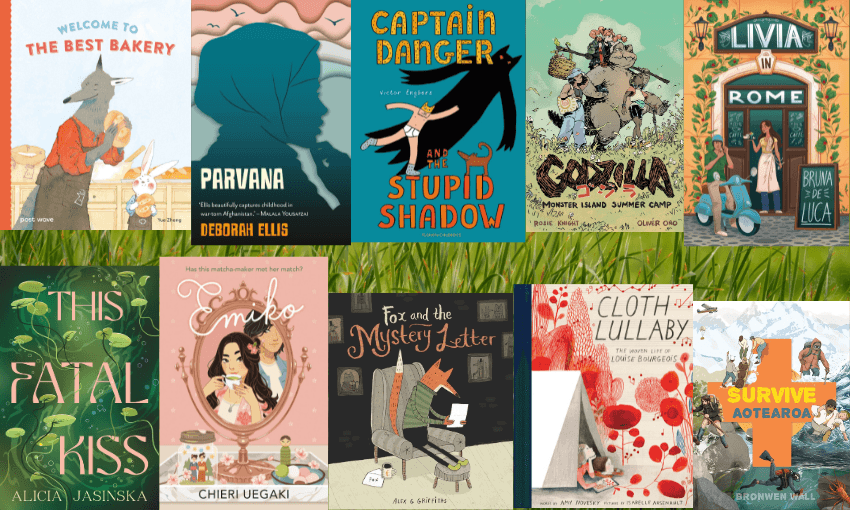Yep, there’s a book of the TV show and yep, it’s just as wonderful. In this extract, funeral director Francis Tipene explains why you don’t need to splurge on send-offs, how he keeps his act together – and why he cringes when people talk about ‘closure’.
Funerals don’t need to be expensive. People can choose lower-price options at every level and keep everyone happy, including the person paying the bills. You don’t need flowers – most people bring them anyway. You don’t need catering – get people to bring a plate back to a relative’s house. You don’t need a fleet of mourning cars – just one big enough to fit the casket. I would rather talk my business out of a fee than see someone go without a funeral because of money worries.
These days, people still stick to the traditional options when they are planning or arranging funerals. Doves and balloons that get released into the sky are pretty standard accessories. They’re a beautiful symbol for letting someone go emotionally, or to represent their departure from this world.
People sometimes ask if it is all right to wear bright colours to lighten the mood. And I say, of course, and we will wear something bright too. But that will just be a tie or small item, because there is a good chance the people will turn up in dark colours after all, and you don’t want the funeral director to be the only one there in a canary-yellow suit.
See also:
The Casketeers is the perfect NZ show
All the time The Casketeers nearly buried me alive
The instant Kiwi classic of The Casketeers
There is another part of looking after the living that we never charge for and which often goes unnoticed. In fact, if we do it properly it won’t be noticed. It is that we carry grief for people. I can see why sometimes people think we are a bit emotionless. It’s because we keep our emotions under control to keep proceedings on track. That means the mourners don’t have to worry about practicalities and can let their emotions out.
I find this a very hard part of the job because I’m an emotional person. No matter how hard I try not to let my emotions show, they often get the better of me. I feel bad because it’s my job not to let my feelings out.
My tie often doubles as a tissue if I need to mop up a tear or two. Silk ones are no good because they aren’t absorbent, so I always wear cotton to funerals. Using a tie helps me be discreet if I shed a tear. I’m not pulling out a hankie and waving it around.
Actually, I should make the point that it’s not a good idea to wipe your eyes with a tie because when you’re picking up or dressing bodies, the end of your tie touches the body all the time. It may not be very hygienic.
If I know I’m going to be a real mess at a service, I get busy to distract myself. I give the flowers a bit of a spruce up. Or I pop out and check the car is okay. Or I find tissues for mourners, but I’m actually doing it for myself. I take the first one, then pass the box around.
Emotional moments can occur anywhere, any time. One that left a lasting impression on me was a cremation. The woman’s grown children did not want to view the charge – which is when mourners get one last look at the casket before it goes into the cremator. But her adult grandchildren did.
I explained to them what would happen: the curtains are closed when the family go in so they can’t see the cremator being prepared, the curtain will open, the cremator door will rise, Nan in her casket will be placed into it quickly and then the door will come down.
When the curtain went up and they saw their grandmother’s casket on the trolley about to be pushed in the cremator, their cries got louder. First, it was a low moan. Then the door went up and they started to wail. That had me in tears. Then it got even louder. I thought: I can’t watch this; you guys make me so sad. It’s not the action of the cremation, it’s the reaction of the family that gets to your heart.
This same thing happened with Fiona, who works with us, when her dad was cremated. I know her so well. We have done so many funerals together and I had seen her shed tears before. But when it was her dad she was crying for, I felt so sad I couldn’t bear to watch her.
I can’t say it enough: funeral directors need to have big hearts and leave them open.
It’s easy to lose touch of the emotional side when you spend so much of your time organising finance and flowers and dealing with council staff and fretting about little details. When you actually own the business, you can lose your connection with why you got into it in the first place. That experience with the grandchildren and the cremation was very grounding for me. It brought me back to the starting point.
When I hear people talking about funerals giving “closure”, I always cringe a bit. I hate that word. Yes, life does go on without the person who died. For those who are left behind there is no choice about it and the world keeps turning.
But closure doesn’t happen. People shouldn’t expect to ‘get over it’, because they won’t. A tutor for a course I once did explained it perfectly: there is never closure, there is moving on to the next stage of life. You can move forward with your own life but you will always have a gap where the person who you loved used to be. It’s much easier to deal with death once you realise that. Then you don’t expect some magic morning to wake up not feeling sad any more.
Life as a Casketeer: What the Business of Death Can Teach the Living by Francis & Kaiora Tipene (HarperCollins New Zealand, $39.99) is available from Unity Books.



